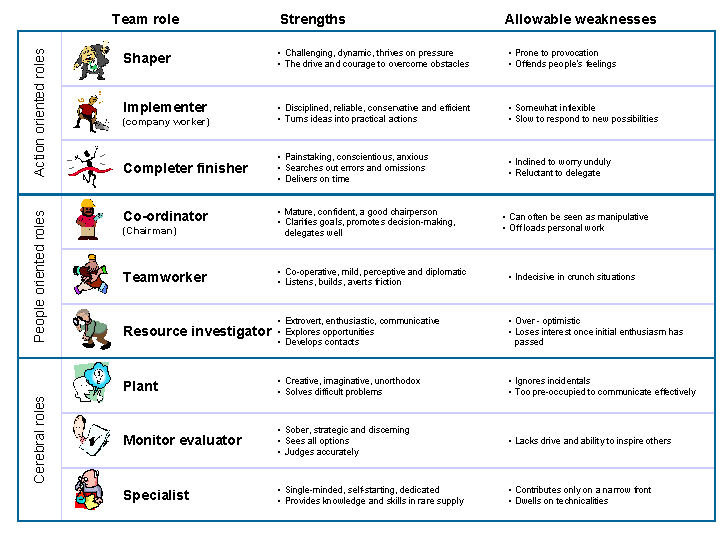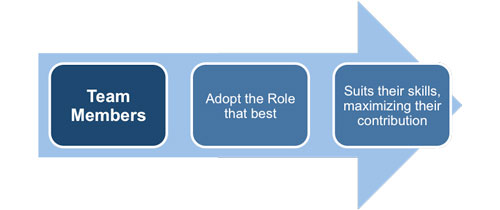
A successful team should ideally cover all nine roles. Besides, it encourages learners to focus explicitly on group work skills. This team role describes how one behaves, contributes and interrelates with others. Belbin’s Team Roles enables you firstly to ensure that all the team roles are included within the makeup of your team, and secondly, that structural weaknesses (in terms of behaviour) within the overall team are addressed. This team forming method gives students the opportunity to identify their own strengths and weaknesses and understand the roles (behaviours) of their teammates as well as their strengths and weaknesses. They also agree that working on Belbin teams has helped them to mainly improve interpersonal relationships and social skills, followed by positive interdependence and individual accountability. Students belonging to Belbin teams acknowledge that they attend classes more regularly, they need less time for study outside the classes and they show a higher interest for the subject at the end of the course.

Additionally, students’ feedback experience and opinion has been collected.

Belbin teams (18/19–19/20) have performed significantly better than self-selected teams (16/17–17/18). The two lowest scores in team-role imply possible areas of weakness. The next highest scores denote back-up team roles towards which you should shift, if for some reason there is less group need for your primary team-role.
BELBIN TEAM ROLES TEST FREE FREE
Team roles test - Free psychological tests. Students’ performance has been measured through the scores obtained during the project, individual exam and Individual Accountability Factor (IAF) and compared with cohorts of previous years, in which team composition was self-selected by students. The highest score on team-role will indicate how you can best make your mark in a project team. A model for building and sustaining effective teams in your own school. Understanding the Team Role preferences of individuals has many benefits, these include:īelbin GetSet can help students from the age of 14-19 and is already used in schools, colleges and universities throughout the UK.This paper presents a method that instructors have designed and implemented to form balanced teams based on Belbin's roles, with the aim of boosting positive interdependence and individual accountability within the teams and improving their performance in a project-based learning environment. By completing an online questionnaire they are given a report in a workbook where they find information about their Team Role preferences and associated strengths. Team Roles are not about putting people into boxes.īelbin GetSet helps young people to find out their Team Role preferences. Most people will have two or three Team Roles that they are most comfortable with, and this can change over time.

The results of this study showed that the most successful teams were made up of a diverse mix of behaviours.ĭr Belbin and his team discovered that there are nine clusters of behaviour - these were called 'Team Roles'.Įach Team Role has its strengths and weaknesses, and each has equal importance. This produces feedback in both scripted and graphicalform. Your responses, via the SPI, are analysed by the Belbin Team Role system Interplace. In 1969 Dr Meredith Belbin began a 9 year study of team behaviour at Henley Management College. The Belbin SelfPerceptionInventory (SPI) is a behaviourbased questionnaire.


 0 kommentar(er)
0 kommentar(er)
